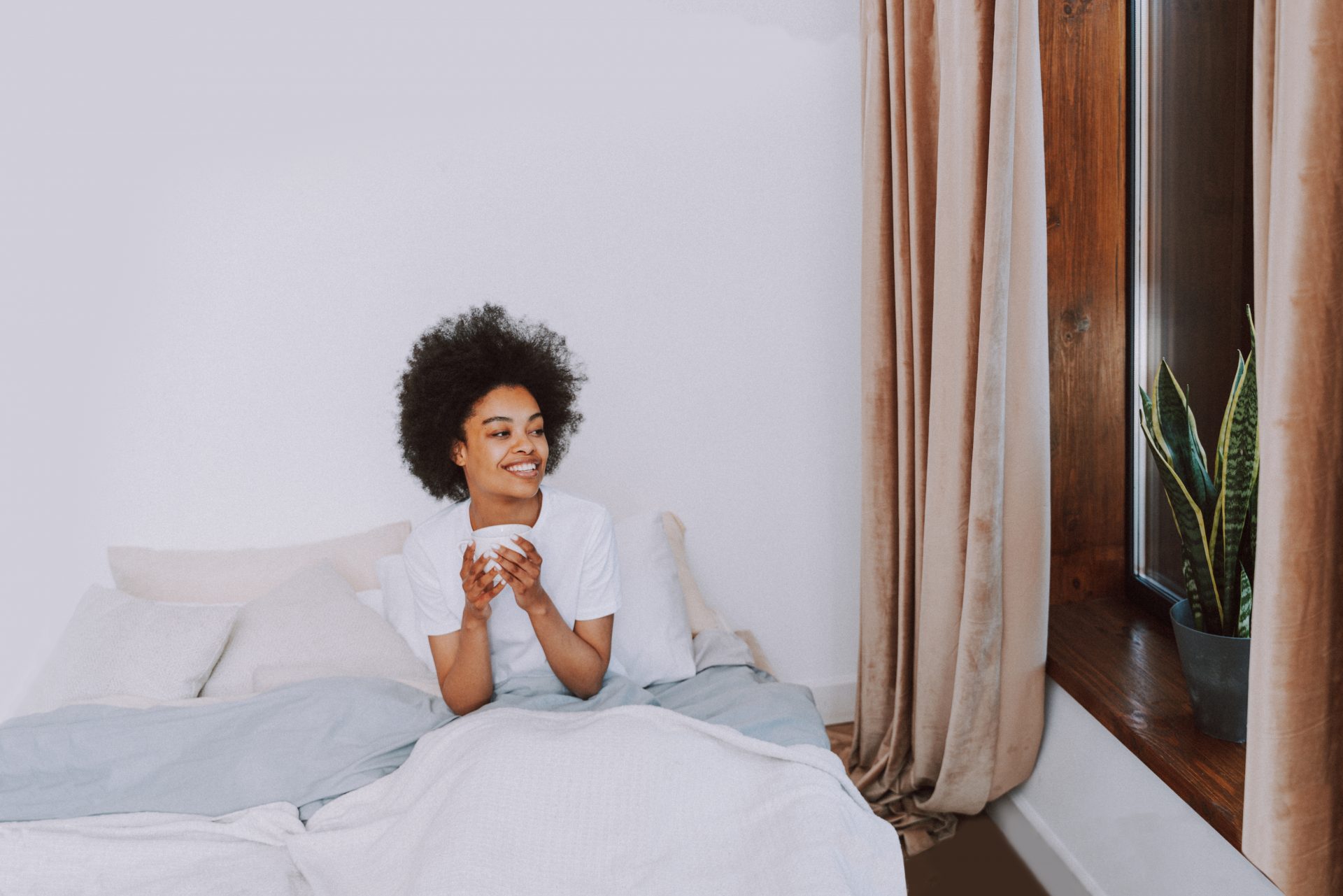If you’ve always assumed that PMS is just part of the menstruation process, then think again: we can significantly reduce our symptoms by changing the way we exercise and eat in the run-up to our period. Here’s how to beat period burnout, once and for all.
PMS is something loads of us battle against on a monthly basis. Whether it’s dealing with piercing cramps, navigating cravings or fighting against the tears, feeling premenstrual can be a lot.
However common it may be, however, we don’t have to live with PMS. Those crashing mood swings and chocolate cravings aren’t actually just par for the course when it comes to periods; they’re a product of hormonal instability. More than 80% of women say that they experience ‘significant PMS’ and cramping and that can leave us feeling totally deflated.
How we move and eat around our cycle can, however, help to avoid period burnout. You don’t have to go through a week of hell just because you menstruate.
You may also like
Best period pants for exercise: “I work out wearing period pants every month – here's why you should too”
What is PMS and what causes it?
“PMS or premenstrual syndrome can be a range of symptoms that affects up to 90% of women,” explains nutritionist Gail Madalena. “It can occur anytime between ovulation through to the day you start your period, and there are over 150 symptoms that have been identified as part of premenstrual syndrome.”
PMS, she says, is largely caused by the hormonal shifts that we experience throughout our cycle: it’s our body’s way of reacting to excessive production of oestrogen during the follicular phase, or drops in progesterone during our luteal phase.” While it might be a little uncomfortable,PMS shouldn’t be debilitating or interfere with our day to day life.
“It’s natural to feel the effects of fluctuating hormones, but when these become out of sync, it can manifest with more pronounced symptoms,” Madalena warns. Things that suggest a potential hormonal imbalance can include:
- excessive fatigue
- irritability
- moodiness
- cravings
- persistent weight gain
- irregular periods
Now, some of those symptoms sound pretty standard – who doesn’t feel a bit grumpy when they’re bleeding for six days on the trot? But how we move and eat can help to even out those swings significantly. And it’s all to do with managing cortisol, or stress.
Do some foods make period cramps worse?
Menstrual cramps happen when prostaglandins (hormone-like substances) cause the uterus to contract to expel its lining. Those prostaglandins can also cause inflammation – which makes those cramps more painful.
A new research review by Rutgers University has found that ‘inflammatory foods’ can make cramps feel worse.
These include:
- coffee
- oil
- salt
- refined grains
- meat
- sugar
These foods, researchers say, increase the release of prostaglandins – and therefore increase vasoconstriction of the blood vessels that feed the uterus.
The review looked at a number of studies on the relationship between diet and menstrual pain. It’s worth flagging that most of them focused on teenagers, as they tend to lose a lot of school days due to cramps (whereas, realistically, most of us can’t afford to pull a sickie every month at work).

Coffee raises cortisol – which can increase inflammation
I know what you’re thinking: it’s exactly when you’re knackered during your period that you need a cup of coffee. And you might find that coffee has absolutely no impact on your cramps at all. But if you’re already in an inflamed state, it might be worth switching to decaf for a couple of days.
While cortisol is an essential hormone for getting us out of bed in the morning, but when we have excessive levels, it can disrupt just about everything from the production of our sex hormones to our quality of sleep and everyday stress levels. And that can increase the risk of cramps and mood swings.
Omega-6 fatty acids have been linked to period pain
The review specifically calls out omega-6 fatty acids as being “pro-inflammatory… and triggering the pain menstruation cascade”.
Foods that contain omega-6 fatty acids:
- Red meat
- Processed foods
- Vegetable oils
It’s worth saying that omega-6 fatty acids can be really beneficial to health; plenty of studies have found that they help to lower bad LDL cholesterol and boost healthy HDL levels. But if you are struggling with cramps, it might be worth reducing your intake for a couple of days and resuming once you’re past the heaviest days.
You may also like
Sugar detox: “Why giving up refined sugar for two weeks was the best thing I could have done for my health“
Excessive sugar or exercise can mess with hormone levels
“(Sugar) raises insulin levels, increases cortisol production and contributes to elevated stores of oestrogen in our fat cells,” says Madalena. Over time, the body becomes desensitised to insulin, which leads to oestrogen dominance.
But don’t go thinking that it’s only those with a sweet tooth that may be more susceptible to PMS. Those who have dieted and had a history of restricted calorific intake can be massively at risk of hormonal imbalance, too. Madalena explains: “Restrictive diets can have long-term effects on our hormone levels, particularly when our weight is drastically affected.
“A sudden and significant calorie restriction, paired with high-intensity exercise can cause a stress response that alters your hormone levels, particularly lowering oestrogen, which in turn can interrupt ovulation and cause a lack of periods.” If inflammatory foods stress our bodies out, then it’s nothing compared to extreme diets which can widely elevate our cortisol levels.
How to reduce PMS symptoms like cramp
Eat more omega-3 fatty acids
The Rutgers University scientists say that omega-3 fatty acids reduce inflammation.
Omega-3 rich foods include:
- salmon
- sardines
- flaxseeds
- nuts
They also stress the importance of eating lots of fresh fruit and veg. The review also found that those of us who follow a vegan or plant-based diet tend to have lower levels of inflammation and are less likely to experience cramps.
Move in a way you feel comfortable
We’ve heard a lot recently about exercising in tune with our cycles – pushing hard when those surges of oestrogen kick in and opting for more gentle yin practices during the week of our periods. If hormonal imbalances are to blame for PMS symptoms, getting the body buzzing with cortisol sounds like a recipe for disaster.
Adapting your workouts to your cycle is going to mean conserving energy and avoiding burnout during times when your energy levels naturally drop.
For me, exercising on my period is a must; sometimes I even perform better during that week. Taking a whole week off to do yoga would probably stress me out more than going for a run. In other words, it’s all about finding what works for you and your lifestyle – not everyone needs to take a break.
You may also like
Exercising and periods: “Am I the only one who feels like a better runner during my period?”
But if you are feeling sluggish, it may mean just giving yourself a lower-load week or concentrating more on slow and steady runs rather than those fast, intense sessions. For those women who live with more debilitating symptoms, however, it can be difficult to know how much attention to pay to those signs.
If your body is crying out for you to skip the gym and stay in bed for an extra couple of hours, then do it. Or try a gentle PMS-focused yoga flow like the one below.
Most of us already know that exercise produces feel good hormones that can boost our mood; it’s during that PMS period that we need them the most. If you’re feeling more emotional than usual, you can use those happy hormones to your advantage. When it comes to mood swings, the aim of the game should be to reduce cortisol.
Reducing stress will help with long-term period health
Cortisol and stress management are front and centre of calming PMS. You want to take any pressure off your workout regime if you do live with cramps, cravings and mood swings… but only if doing so is going to help you relax. Food-wise, you want to try to reduce anything that’s going to increase inflammation and focus on eating a really varied diet that’s rich in whole foods.
Supplements for PMS
If you’re not already taking a supplement, choosing one that has a good dose of magnesium can be great for boosting energy production, aiding digestion and helping with sleep and anxiety. During your period, magnesium levels naturally decline so taking a supplement that combines known anti-inflammatories and helpful nutrients like magnesium (known to improve sleep quality), ashwagandha (proven to reduce cortisol) and anti-inflammatory turmeric (like Puresport’s Female Balance Hormone Health) mayhelp to ease headaches, cramps and bloating.
For more nutrition and workout tips, visit the Strong Women Training Club.
Images: Getty
Source: Read Full Article
